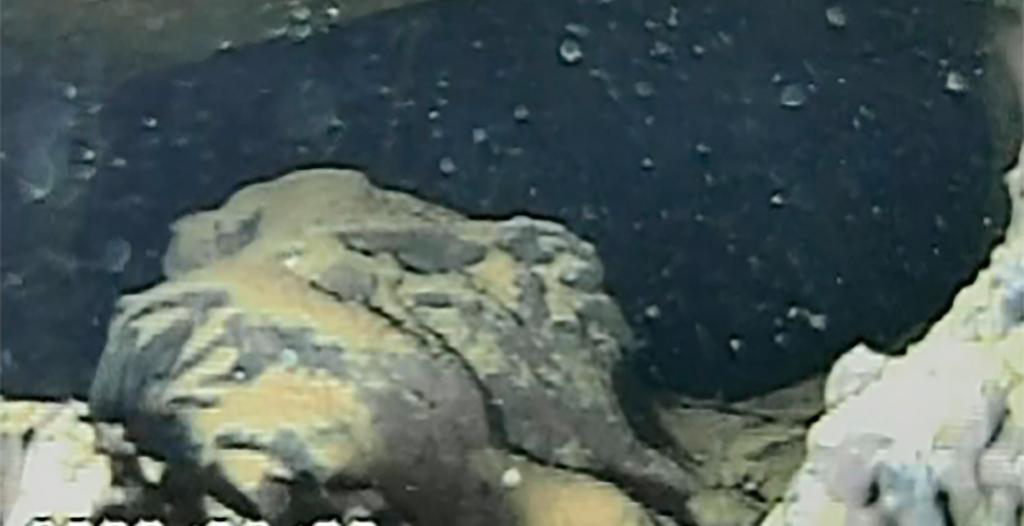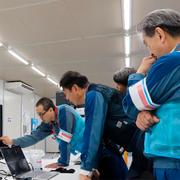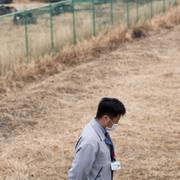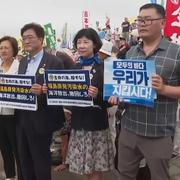
Nya bilder från Fukushima visar smält kärnbränsle
En fjärrstyrd robot har fotograferat vad som tycks vara klumpar av smält kärnbränsle på botten av den mest skadade reaktorn i det japanska kärnkraftverket Fukushima, rapporterar AP.
Det förra försöket att skicka in en kameraförsedd robot misslyckades, men denna vecka lyckades roboten ROV-A ta sig in och dokumentera trasiga strukturer, spruckna rör och högar av bråte.
Fukushima fick kraftiga skador i en jordbävning 2011 – den allvarligaste kärnkraftsolyckan sedan Tjernobyl 1986. Även i Tjernobyl har man fotograferat klumpar av smält kärnbränsle – bland annat en stor, kraftigt radioaktiv massa av bland annat korium som på grund av sin form kallas ”elefantfoten”.
bakgrund
Fukushimakatastrofen
Wikipedia (en)
The Fukushima nuclear disaster was a 2011 nuclear accident at the Fukushima Daiichi Nuclear Power Plant in Ōkuma, Fukushima, Japan. The proximate cause of the disaster was the 2011 Tōhoku earthquake and tsunami.
It was the most severe nuclear accident since the Chernobyl disaster in 1986. It was classified as Level 7 on the International Nuclear Event Scale (INES), after initially being classified as Level 5, joining Chernobyl as the only other accident to receive such classification. While the 1957 explosion at the Mayak facility was the second worst by radioactivity released, the INES ranks incidents by impact on population, so Chernobyl (335,000 people evacuated) and Fukushima (154,000 evacuated) rank higher than the 10,000 evacuated from the classified restricted Mayak site in rural southern Urals.
The accident was triggered by the Tōhoku earthquake and tsunami on Friday, 11 March 2011. On detecting the earthquake, the active reactors automatically shut down their normal power-generating fission reactions. Because of these shutdowns and other electrical grid supply problems, the reactors' electricity supply failed, and their emergency diesel generators automatically started. Critically, these were required to provide electrical power to the pumps that circulated coolant through the reactors' cores. This continued circulation was vital to remove residual decay heat, which continues to be produced after fission has ceased. However, the earthquake had also generated a tsunami 14 metres (46 ft) high that arrived shortly afterward, swept over the plant's seawall and then flooded the lower parts of reactors 1–4. This flooding caused the failure of the emergency generators and loss of power to the circulating pumps. The resultant loss of reactor core cooling led to three nuclear meltdowns, three hydrogen explosions, and the release of radioactive contamination in Units 1, 2 and 3 between 12 and 15 March. The spent fuel pool of previously shut down Reactor 4 increased in temperature on 15 March due to decay heat from newly added spent fuel rods, but did not boil down sufficiently to expose the fuel.In the days after the accident, radiation released into the atmosphere forced the government to declare an ever-larger evacuation zone around the plant, culminating in an evacuation zone with a 20 km radius. All told, some 154,000 residents evacuated from the communities surrounding the plant due to the rising off-site levels of ambient ionizing radiation caused by airborne radioactive contamination from the damaged reactors.Large amounts of water contaminated with radioactive isotopes were released into the Pacific Ocean during and after the disaster. Michio Aoyama, a professor of radioisotope geoscience at the Institute of Environmental Radioactivity, has estimated that 18,000 terabecquerel (TBq) of radioactive caesium-137 were released into the Pacific during the accident, and in 2013, 30 gigabecquerel (GBq) of caesium 137 were still flowing into the ocean every day. The plant's operator has since built new walls along the coast and has created a 1.5 km long "ice wall" of frozen earth to stop the flow of contaminated water.While there has been ongoing controversy over the health effects of the disaster, a 2014 report by the United Nations Scientific Committee on the Effects of Atomic Radiation (UNSCEAR) and World Health Organization projected no increase in miscarriages, stillbirths or physical and mental disorders in babies born after the accident. Evacuation and sheltering to protect the public significantly reduced potential radiation exposures by a factor of 10, according to UNSCEAR. An ongoing intensive cleanup program to both decontaminate affected areas and decommission the plant will take 30 to 40 years from the disaster, plant management estimated.On 5 July 2012, the National Diet of Japan Fukushima Nuclear Accident Independent Investigation Commission (NAIIC) found that the causes of the accident had been foreseeable, and that the plant operator, Tokyo Electric Power Company (TEPCO), had failed to meet basic safety requirements such as risk assessment, preparing for containing collateral damage, and developing evacuation plans. At a meeting in Vienna three months after the disaster, the International Atomic Energy Agency faulted lax oversight by the Ministry of Economy, Trade and Industry, saying the ministry faced an inherent conflict of interest as the government agency in charge of both regulating and promoting the nuclear power industry. On 12 October 2012, TEPCO admitted for the first time that it had failed to take necessary measures for fear of inviting lawsuits or protests against its nuclear plants.
bakgrund
Tjernobylkatastrofen
Wikipedia (en)
The Chernobyl disaster was a nuclear accident that occurred on 26 April 1986 at the No. 4 reactor in the Chernobyl Nuclear Power Plant, near the city of Pripyat in the north of the Ukrainian SSR in the Soviet Union. It is considered the worst nuclear disaster in history both in cost and casualties. It is one of only two nuclear energy accidents rated at seven—the maximum severity—on the International Nuclear Event Scale, the other being the 2011 Fukushima Daiichi nuclear disaster in Japan. The initial emergency response, together with later decontamination of the environment, involved more than 500,000 personnel and cost an estimated 18 billion Soviet rubles—roughly US$68 billion in 2019, adjusted for inflation.The accident occurred during a safety test on the steam turbine of an RBMK-type nuclear reactor. During a planned decrease of reactor power in preparation for the test, the power output unexpectedly dropped to near-zero. The operators were unable to restore the power level specified by the test program, which put the reactor in an unstable condition. This risk was not made evident in the operating instructions, so the operators proceeded with the test. Upon test completion, the operators triggered a reactor shutdown. But a combination of operator negligence and critical design flaws had made the reactor primed to explode. Instead of shutting down, an uncontrolled nuclear chain reaction began, releasing enormous amounts of energy.: 33 The core melted down and two or more explosions ruptured the reactor core and destroyed the reactor building. This was immediately followed by an open-air reactor core fire. It released considerable airborne radioactive contamination for about nine days that precipitated onto parts of the USSR and Western Europe, before finally ending on 4 May 1986. Some 70% of fallout landed in Belarus, 16 kilometres (9.9 mi) away. The fire released about the same amount of contamination as the initial explosion. As a result of rising ambient radiation levels off-site, a 10-kilometre (6.2 mi) radius exclusion zone was created 36 hours after the accident. About 49,000 people were evacuated from the area, primarily from Pripyat. The exclusion zone was later increased to 30 kilometres (19 mi) when a further 68,000 people were evacuated from the wider area, and later it became the Chernobyl Exclusion Zone covering an area of approximately 2,600 km2 (1,000 sq mi).The reactor explosion killed two engineers and severely burned two more. A massive emergency operation to put out the fire, stabilize the reactor, and clean up the ejected nuclear core began. During the immediate emergency response 134 station staff and firemen were hospitalized with acute radiation syndrome due to absorbing high doses of ionizing radiation. Of these 134 people, 28 died in the days to months afterward and approximately 14 suspected radiation-induced cancer deaths followed within the next 10 years.Chernobyl's health effects to the general population are uncertain. An excess of 15 childhood thyroid cancer deaths were documented as of 2011. A United Nations committee found that to date fewer than 100 deaths have resulted from the fallout. Determining the total eventual number of exposure related deaths is uncertain based on the linear no-threshold model, a contested statistical model. Model predictions of the eventual total death toll in the coming decades vary. The most robust studies predict 4,000 fatalities when solely assessing the three most contaminated former Soviet states, to about 9,000 to 16,000 fatalities when assessing the whole of Europe. Following the disaster, Pripyat was replaced by the new purpose built city of Slavutych.
The USSR built the protective Chernobyl Nuclear Power Plant sarcophagus by December 1986. It reduced the spread of radioactive contamination from the wreckage and protected it from weathering. It also provided radiological protection for the crews of the undamaged reactors at the site, which were restarted in late 1986 and 1987. Due to the continued deterioration of the sarcophagus, it was further enclosed in 2017 by the Chernobyl New Safe Confinement. This larger enclosure allows the removal of both the sarcophagus and the reactor debris, while containing the radioactive hazard. Nuclear clean-up is scheduled for completion in 2065.
bakgrund
”Elefantfoten”
Wikipedia (en)
The Elephant's Foot is the nickname given to a large mass of corium and other materials formed underneath the Chernobyl Nuclear Power Plant, near Pripyat, Ukraine, during the Chernobyl disaster of April 1986. Discovered in December of that year, it is located in a maintenance corridor near the remains of Reactor No. 4. It is still an extremely radioactive object, though the danger has decreased over time due to the decay of its radioactive components.
Omni är politiskt obundna och oberoende. Vi strävar efter att ge fler perspektiv på nyheterna. Har du frågor eller synpunkter kring vår rapportering? Kontakta redaktionen



